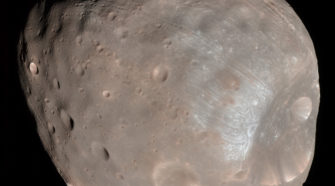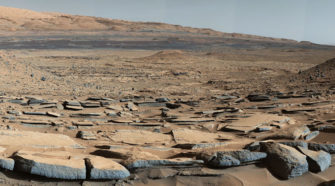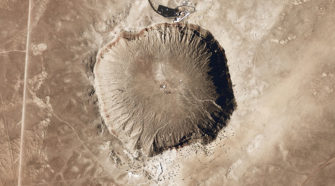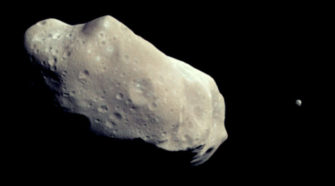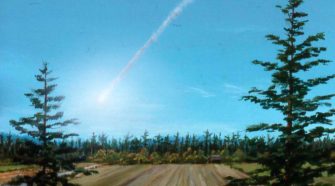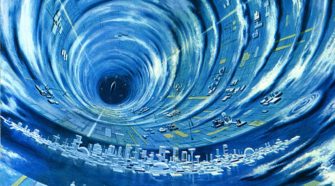Topic
Special Topic: Small Planetary Moons
Throughout “Ice and Stone 2020” I have generally used the term “small bodies of the solar system” to refer to comets and asteroids. However, there is another type of “small body” that we encounter throughout the solar system: these are the smaller moons that accompany many of the major planets. The dividing line between what …
Special Topic: Life in Martian Meteorites?
The question as to whether or not we are alone in the universe has fascinated humanity throughout most of its history. In addition to driving many of our mythologies and stories, it has also motivated many of us, myself included, to pursue sciences like astronomy in the first place. The unambiguous discovery that life has …
Special Topic: Terrestrial Impact Craters
The “Special Topics” presentation six weeks ago on “Lunar and Planetary Impacts” discussed how the Italian astronomer Galileo Galilei noticed craters on the moon the first time he turned his recently-made primitive telescope towards that object. Indeed, almost any kind of optical aid, be this in the form of binoculars or a small telescope, will …
Special Topic: Discoveries and Surveys
Up until a few centuries ago, all the comets that were seen by human beings were “discovered” via the unaided eye. It is unlikely that there were ever any search efforts for these objects, rather, when they appeared they essentially revealed themselves to the people who were alive at that time. Probably the closest thing …
Special Topic: Pluto
The discovery of the planet Uranus by British astronomer William Herschel in 1781 essentially doubled the size of the then-known solar system. During the years after Uranus’ discovery astronomers began to notice small discrepancies in its orbital motion, and at least two individuals – a young British astronomer named John Adams, and a French mathematician, …
Special Topic: Past Spacecraft Missions
The majority of what we know about the various planets and many of the other objects in our solar system has come from spacecraft missions sent to those bodies. Even with the best telescopes here on Earth many of these objects are little more than points of light in the sky, and it was only …
Special Topic: The Tunguska Event and Other Recent Impacts
During the early morning hours on Tuesday, June 30, 1908, at around 7:17 A.M. local time, “something” entered the earth’s atmosphere near the Pacific coast of Asia, traveling northwestward. A few km above the surface of a largely uninhabited region of central Siberia, near the Stony Tunguska River some 90 km north-northwest of the village …
Special Topic: Orbits and Future Returns
“Ice and Stone 2020” participants have undoubtedly noticed that I have often discussed how this-or-that comet or asteroid will be returning to the inner solar system or passing by Earth at some point in the future, and perhaps have wondered how such things are determined. In principle, the processes by which such events are calculated …
Special Topic: Lunar and Planetary Impacts
Ever since the Italian astronomer Galileo Galilei turned his primitive telescope towards the moon on November 30, 1609 and saw them for the first time, we’ve known that the moon is covered with craters. These come in all sizes, from very large ones several hundred km across down to meter-size and smaller. For a long …
Special Topic: “Small Bodies” in Culture and Literature
Although they may not be as big a presence in our overall human culture and literature as the moon and the other planets of our solar system are, the “small bodies” of our solar system are nevertheless present. There a number of misperceptions about them, perhaps more so than there are for the planets. Consider, …

